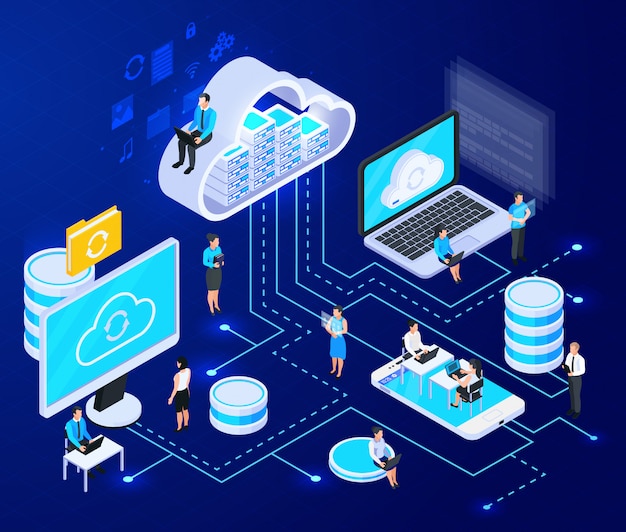
Establishing and keeping up an eStore in the fast-paced world of e-commerce involves more than just opening for business and hoping for the crowds to arrive. Numerous factors need to be considered, with the total cost of ownership (TCO) being one of the most important.
Throughout its lifetime, the total cost of ownership (TCO) includes all costs related to owning, running, and maintaining your eStore. The key to long-term performance and profitability is decreasing the total cost of ownership (TCO), which includes both initial setup and continuing maintenance expenditures.
In order to maximize your eStore and reduce its total cost of ownership, this article examines seven essential tactics.
1. Cloud-Based Infrastructure

The shift to cloud-based infrastructure brings many upsides to e-commerce firms. By obtaining cloud services for hosting, storing, and computing, you don’t have to spend your money on hardware purchases and routine maintenance tasks.
The adoption of pay-as-you-go pricing plans gives you a chance only to be charged for the resources you need, which means that you may lower upfront capital expenses and optimize operational costs. Scalability and agility are two significant characteristics of cloud platforms that help you adjust resources based on the changing demand.
Thus, your system can perform optimally in high-traffic times without having to overspend on infrastructure. Therefore, the importation of cloud technology is a critical factor in e-store TCO to improve performance efficiency.
2. Open Source Software
The adoption of open-source software may prove to be an untapped cost-efficient option for e-commerce businesses, but their operational aspects still need to be accepted. Various platforms provide advanced features, customization options, and community support without making the user pay heavy licensing fees.
Businesses can offer more flexibility in customization and integration with third-party tools by choosing open-source solutions and not drawing them into expensive proprietary software.
In addition, the collaborative nature of the open-source communities is responsible for continuously providing updates, which contribute to the software’s longevity and adaptability. Fundamentally, open-source software is an indispensable tool for decreasing the total cost of ownership by optimizing the functionalities.
3. Optimized Supply Chain Management

Effective management of the supply chain is a crucial element that helps minimize the operational costs of electronic businesses. Companies can then use complex inventory management systems to forecast demand accurately, optimize inventory levels, and cut carrying costs through the use of such systems.
Being strategic in supplier relationship management provides you with competitive terms and prices. Consequently, it lowers the expenses incurred in procurement. Improvement of fulfillment operations, including human effort and shipping cost, can be achieved through streamlining the processes, which makes the process more efficient.
Also, incorporating real-time tracking and monitoring allows for making informed decisions, which include resource allocation and waste minimization ahead of time.
Consequently, efficient supply chain management not only leads to lower total cost ownership but also better product availability, which in turn leads to improved customer satisfaction.
4. Performance Optimization

The optimization of your e-store’s performance is essential to reducing the total cost of ownership and improving the user experience. Through streamlining the webpages’ loading time, reactivity, and scalability, companies can decrease server traffic and freeloading, thus cutting down on infrastructure costs.
By making use of methods like caching and content delivery networks, the loading of website pages is accelerated, therefore reducing bounce rates and increasing conversion rates—additionally, code optimization and mobile responsiveness work side by side to achieve user engagement and retention.
Amounts spent on performance optimization are aimed at lowering operational costs and increasing sales as customers will have seamless and efficient browsing. Doing so will result in increased sales and encourage customer loyalty.
5. Data Analytics and Business Intelligence
Capturing the potential of data analytics and business intelligence increases e-commerce companies’ ability to make informed decisions that will, in turn, affect the total cost of ownership positively.
Through customer behavior, sales trends, and operation indicators, firms can trace the ways of spending in the most efficient manner and the allocation of resources. Marketing personalized campaigns based on the data contributes significantly to ROI and customer retention.
The use of analytics software and data visualization systems helps in data-driven decision-making, which ultimately leads to an increase in overall efficiency and a cut in wasteful spending. Basically, exploiting data adequately is one of the elements that help businesses simplify operations and generate more profits in a technical e-commerce environment.
6. Security Measures

Implementing comprehensive cybersecurity measures is mandatory to reduce risks and deal with expenses deriving from failures of online businesses.
Imposing strong encryption measures, access controls, as well as regular security audits protect sensitive data and mitigate the occurrence of expensive breaches. Integrative training measures will increase the level of security consciousness, decreasing the chances of accidents caused by humans.
Adherence to safety standards within the industry not only reduces legal risks but also prevents heavy fines and damage to reputation. With robust safety precautions in place, companies can protect their balance sheet while sustaining customer loyalty so that financial setbacks due to breaches in security don’t happen.
Bottomline
To optimize your e-store for a lower total cost of ownership, you need a method that takes a strategic approach to many elements of operations, technology, and customer experience.
Adopting open-source software, cloud-based infrastructure, and other tactics expedites processes, cuts costs, and promotes long-term profitability.
Stay ahead of the competition in the dynamic world of e-commerce by constantly assessing and adjusting your plans to changing market dynamics and client preferences.







